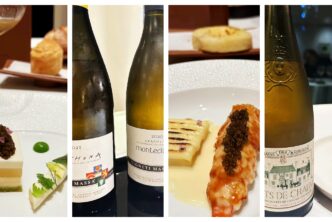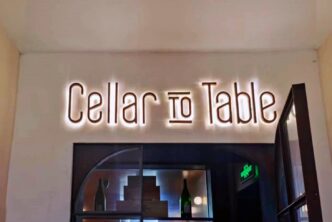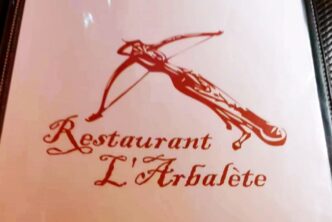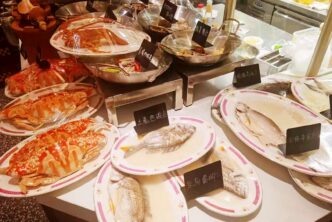Massimo Camia Ristorante
strada provinciale 3 Alba-Barolo 122
La Morra 12064
Italy
tel. +39 017356355
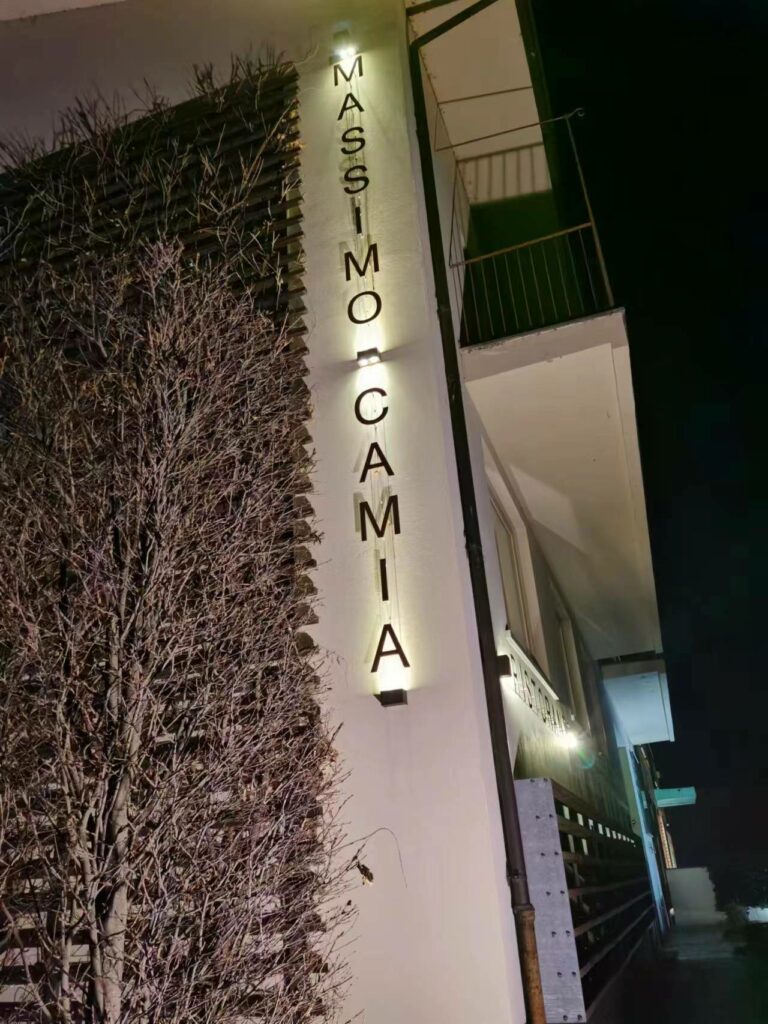
The Dishes
Raw Cubes Of Fassone Veal Entrecôte
Lightly Smoked Eel, Sweet And Sour Chicory a La Plancha , Red Pepper Jelly
Pink-Cooked Duck Breast, Sweet Pear And Pak-Choi
Rack Of Lamb Served On A Hot Stone, Grilled Vegetables
Hazelnuts Soufflé and Moscato English cream
Like anywhere else in the world, the Langhe are loaded with restaurants the partisans of which tirelessly pump and sing the praises of. Undoubtedly, you can eat well in the Langhe, and the bevy of Michelin stars awarded to the area implies it’s a place that has its share of cooks who know what they are doing (one three stars restaurant, one two stars restaurant and something like thirty or so one star establishments are to be found more or less close to Alba and the Barbaresco and Barolo denominations, so that in and of itself means something). But just like it also is anywhere else in the world, there are many awarded restaurants that just aren’t that special: never bad, but neither are they significantly better, when better at all, than many other local, non-starred establishments that don’t have the benefit of internet cheerleaders waxing on poetically about them at every drop of a keyboard button from Mumbai to New York. And then there are somewhat underrated-dining places, like for example the ristorante Massimo Camia, that despite its Michelin star (Camia has held one uninterruptedly since 2001 throughout various reiterations and locations of his restaurant) is rarely the first dining venue foodies rave about. And that’s a mistake.
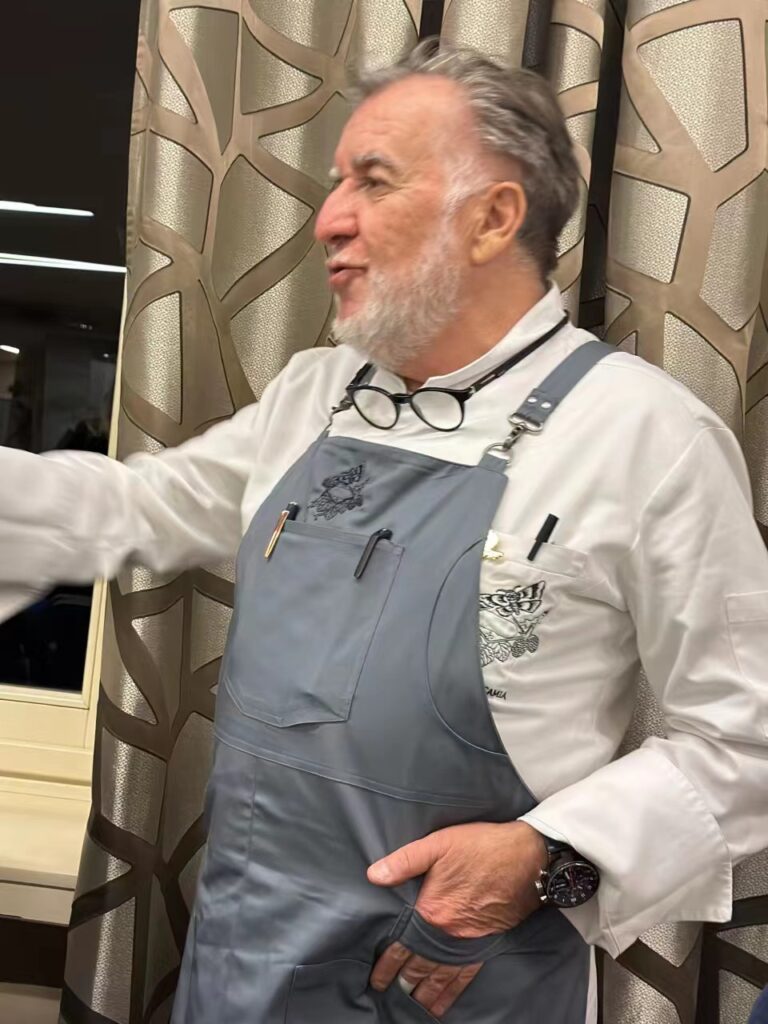
I last wrote about this restaurant when I was still Senior Editor at Vinous back in 2015, but I have been back to Camia many times since and so it was high time I wrote up another review. If nothing else to verify that it was all as great as I remembered it. The dining experience at the restaurant has not changed at all, for Massimo Camia is what many modern-day chefs are not: a cook, and not just a chef and media animal rolled into one. He has learned his craft in the trenches and can pull off both traditional and modernist renditions of Piedmontese classics without causing anyone to roll his or her eyes to the heavens. Even better, he recognizes quality ingredients when he sees them, and knows how and where to source them; in fact, there are less than a handful of restaurants in the Langhe where you’ll find better cheeses and cotechino than you will at the Massimo Camia, a sure-fire sign of someone having put in long hours of research over the years, not to mention having the passion to search out for the best foodstuffs in the first place. That sort of knowhow, knowledge, and drive are also put on full display through Camia’s florid catering business, in my view the best catering operation of the Langhe.
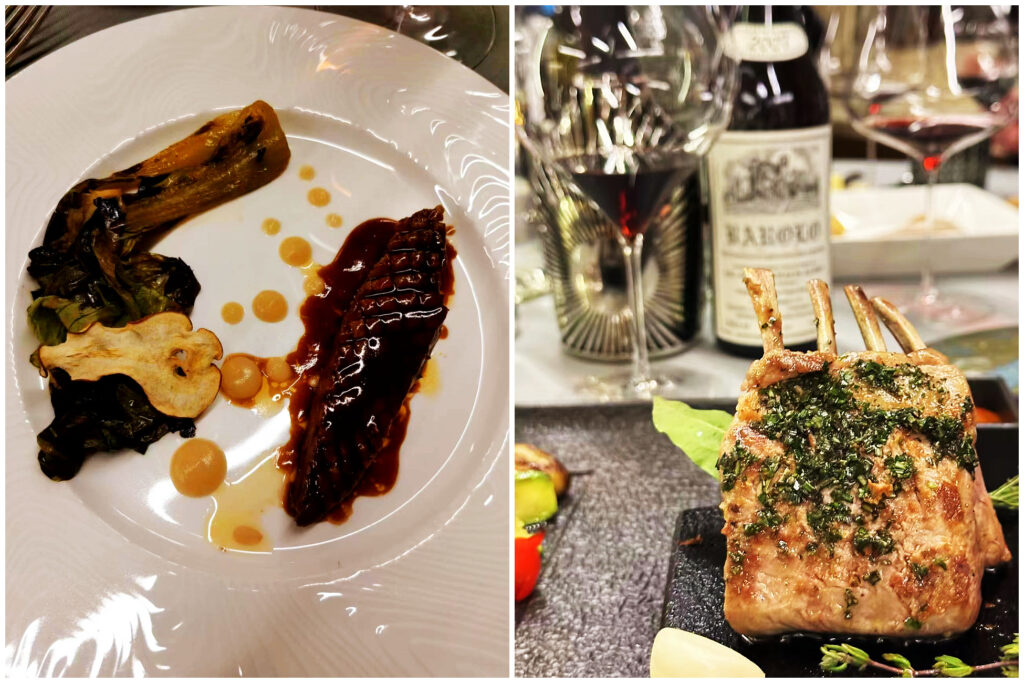
Born in 1960 and so now a little more than 60 years old, Massimo Camia is one of Italy’s, never mind Piedmont’s, best chefs. His no-frills cooking is precise and faithful to the ingredients and the meaning of local recipes; if and when he may choose to revisit one somewhat, there’s always a clearly discernible logic behind his innovative twists. Camia’s current eponymous restaurant (ristorante Massimo Camia) is located within the confines of the Damilano winery on the road that will take you (roughly) from La Morra to Barolo. Despite its close association with a winery, the restaurant is a family-run operation with Massimo’s wife Luciana in the main dining room along with son Jacopo (the restaurant’s sommelier) and daughter Elisabetta in the kitchen. A certain degree of independence from Damilano is apparent also when perusing the wine list, one that offers wines from all the famous and less famous Langhe producers and not just Damilano bottlings (as might take place in a winery-linked restaurant). Not that that would necessarily be a bad thing, but still, it’s nice to have many choices available.
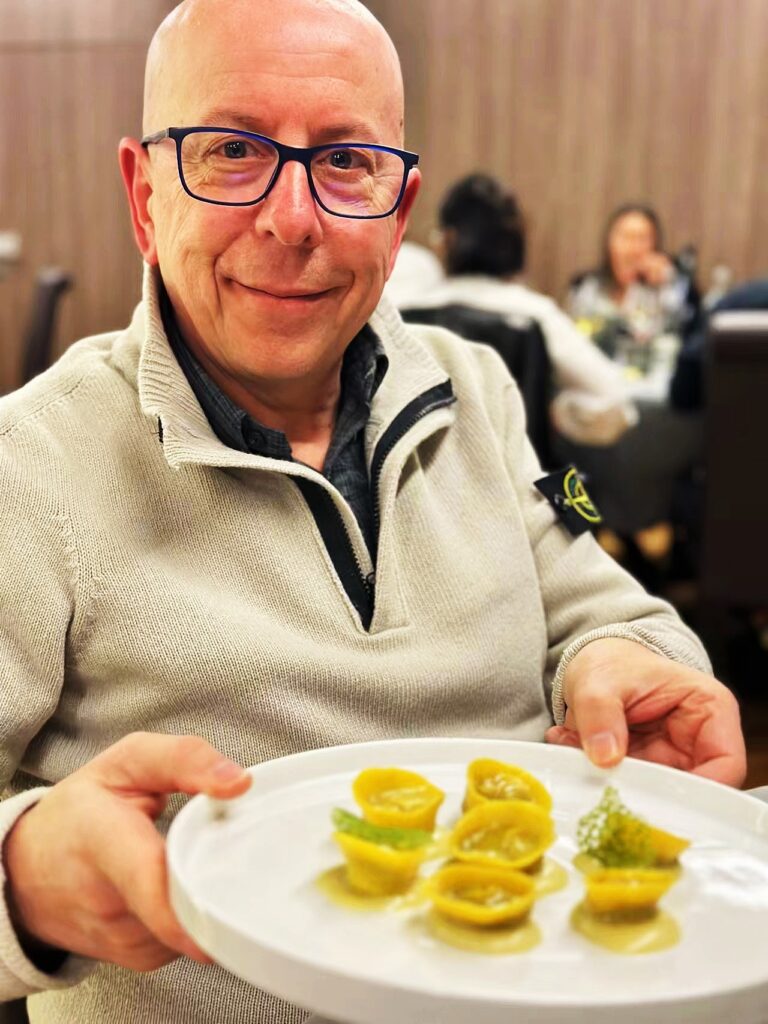
Camia was born into a talented family of cooks, beginning with his father and his sister; his brother was for a while a chef at NYC’s well-known Barolo restaurant (opened in 1990) and later worked in Miami as well, prior to moving back to Roddino. Massimo instead travelled less, preferring to hone his craft in many large national hotel and restaurants establishments prior to opening up in 1986 his own place in Mondovì; however, his love of the Langhe was such (Camia and his wife are both native of Monforte) that he looked to move back there. Which is exactly what he did in 1990, when he opened what was to become one of the Langhe’s 2-3 best restaurants, the Locanda nel Borgo Antico, located right in the heart of Barolo (with Camia’s departure, the little town has never again had a restaurant of the same ilk). I remember eating at the little Locanda, tucked away on the first floor of a pretty building, for the first time in 1992 and it was immediately clear to me that both restaurant and chef had a step above all the area’s other restaurants and personnel, places that I dined in regularly during my frequent winery visits of the 90s. The Locanda was a real gem, and I was chagrined to hear that Camia had decided to move his operation to a much larger modern venue towards Novello. He since moved again, arriving at Damilano in 2013 (Camia is a huge motorcycle enthusiast, and getting onto some form of motor and moving on has always characterized him and his life: he is now contemplating moving to yet another new location, so stay tuned for the official announcement, perhaps next year).
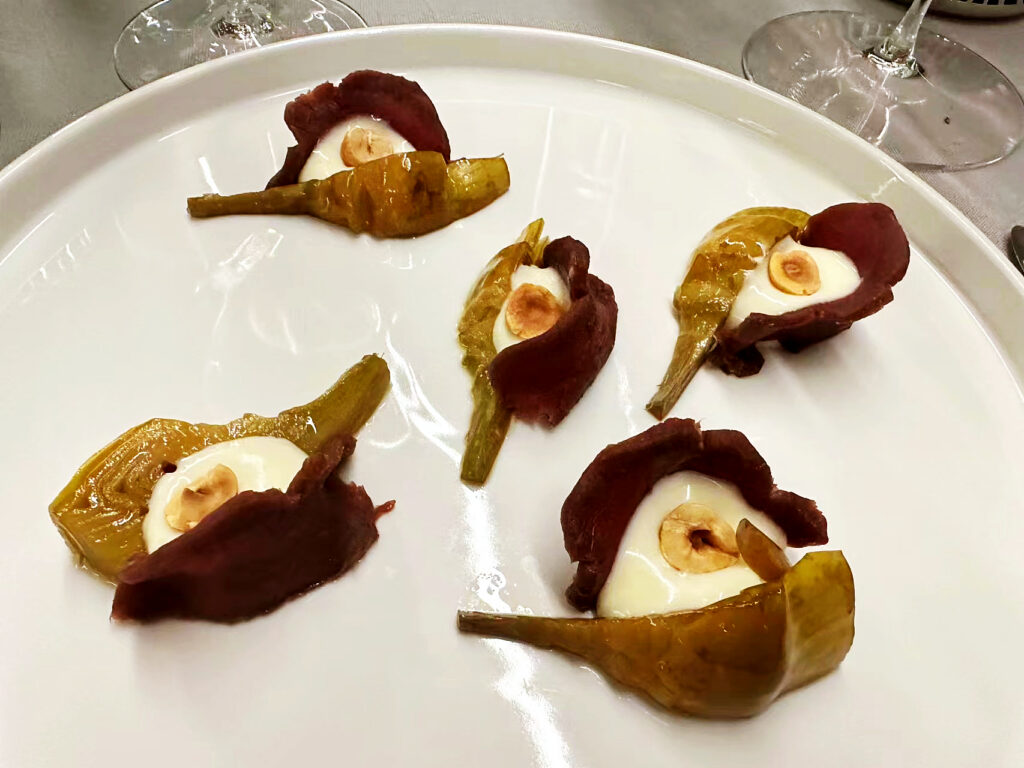
On this night the food was, as is always the case, quietly excellent. Camia’s cuisine is a discreet one, well-delineated and pure. More than “traditional”, though it certainly is, it is best described as “classic”, which also summarizes well the look of the restaurant. In fact, the restaurant is spacious and bright (and is made that much brighter by the large glass windows that allow you to look at Barolo’s hills, one of the restaurant’s design features that most appeals to Camia). Tables are large and also nicely spaced out, and you will find the entire dining experience is one of quiet refinement. Famous Camia recipes are always available on the ever-changing menu: the raw cubes of fassona veal entrecôte and the rack of lamb served on a hot stone with grilled vegetables are not to be missed, two beautiful and very flavourful meat dishes that leave about 90% of all other Langhe restaurant meat dishes in the dust. And that’s saying quite something, given that in the Langhe most chefs know their way around a piece of beef or lamb or game. That said, both the lightly smoked eel, sweet and sour chicory with red pepper jelly, and the pink-cooked duck breast, with sweet pear and pak-choi, were faultless. Last but certainly not least, my dessert was an absolute winner, with a delightfully intense and fluffy hazelnut soufflé and Moscato English cream making me swoon at every bite. And it could not be otherwise, given Camia’s well-known passion for sweets (if it were up to him, he’d start the day off with three croissants or brioches all at once).
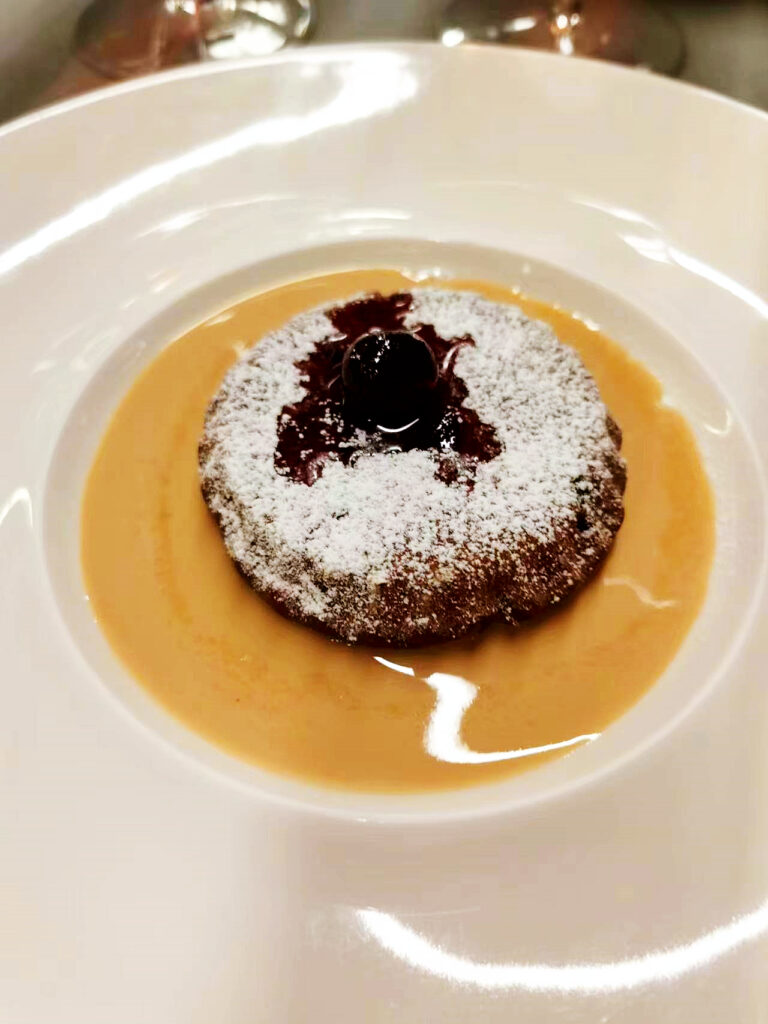
The Wines
Laurent-Perrier Champagne Grand Siècle 91
Ca’ du Press 2018 Barolo del Comune di Monforte d’Alba 90
Giovanni Rosso 2007 Barolo dell’Antica Vigna Riunda 91
Bruno Giacosa Barolo 1996 Barolo Villero NR
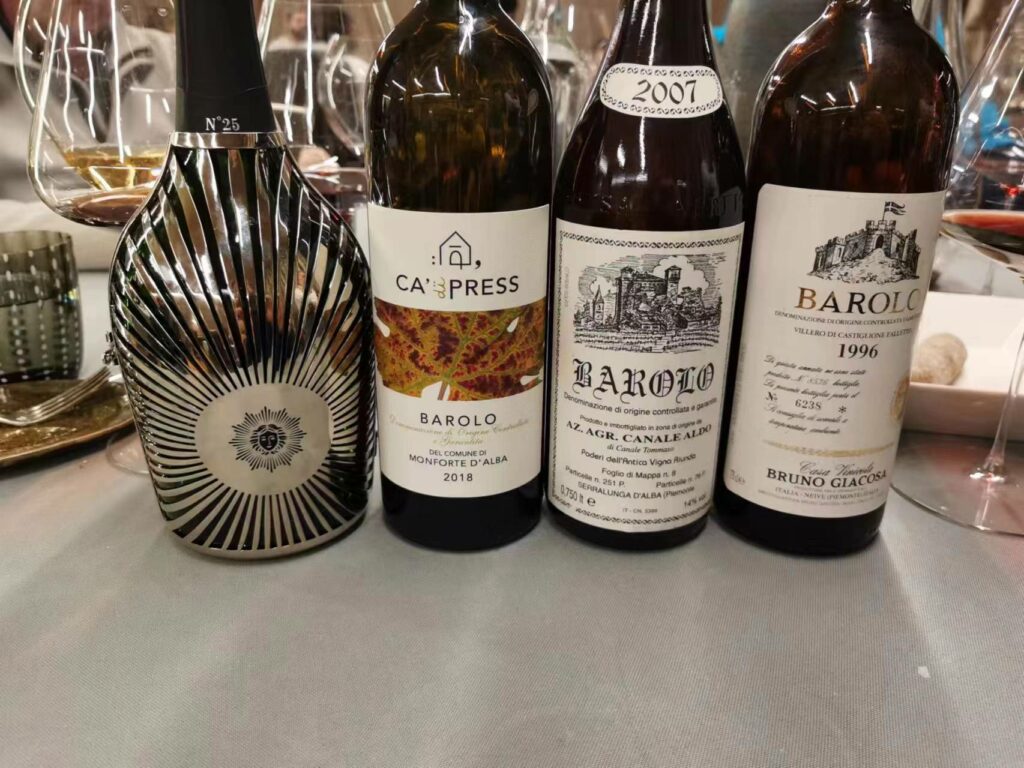
The wine list is excellent, even though, like most other Italian establishments save for a small minority, it\ is hampered by a lack of older vintages. Still, that is the reality of most Italian restaurant dining, and so be it. We drank well on this night, but if there is one criticism I can level at what was an otherwise wonderful evening of fine food and friendship, the wine service was too slow, something that was remarked upon by more than one dining guest. And that’s a pity. We enjoyed everything we tasted and drank: Laurent-Perrier Champagne Grand Siècle, Ca’ du Press 2018 Barolo del Comune di Monforte d’Alba, Giovanni Rosso 2007 Barolo dell’Antica Vigna Riunda and the Bruno Giacosa Barolo 1996 Barolo Villero. Only the last wine was unfortunately not in perfect form, but through no fault of the restaurant as it was a bottle we had brought ourselves. The Laurent-Perrier Champagne Grand Siècle is a rather unique Champagne in that it is a mostly Chardonnay bottling (with some Pinot Noir) picked from eleven of the region’s seventeen grand crus and a blend of three different vintages, where the youngest dominates. Notes of canned peach, lemon, iodine and musk abound, with noteworthy freshness making it a good way to start the meal (though the bubbly is big enough to stand up to concentrated fare too). The Ca’ du Press 2018 Barolo del Comune di Monforte d’Alba is a solidly if slightly unexciting Barolo that speaks of underbrush, camphor and dusty red fruit. Ca’ di Press is a relatively new but promising Barolo producer that undoubtedly has talent but will need to be seen again in vintages other than the difficult 2018 to gather more intelligence on the winery’s effective capacities. The Giovanni Rosso 2007 Barolo dell’Antica Vigna Riunda from one of the most historic and important parcels of all Barolo (from where many of the grapes that Giacosa used to use to make his famous red label Vigna Rionda Riserva Barolos) is a perfectly fine wine but suffers from the less than ideal Nebbiolo vintage, much too warm (actually, downright hot) to offer much nuance or grace. It’s nobody’s fault, the year is what it was (overrated too) and as much as I can recommend other Giovanni Rosso vintages, I’d skip this one, as I would almost any 2007 from anyone else. Last but not least, the Bruno Giacosa 1996 Barolo Villero bottling was off, most likely in relation to a poor cork seal that allowed premature oxidation to set in: I know this specific wine extremely well, and it is normally an outstanding bottle of Barolo. Unfortunately, this bottle was nothing of the sort. It happens, and again, it’s nobody’s fault.
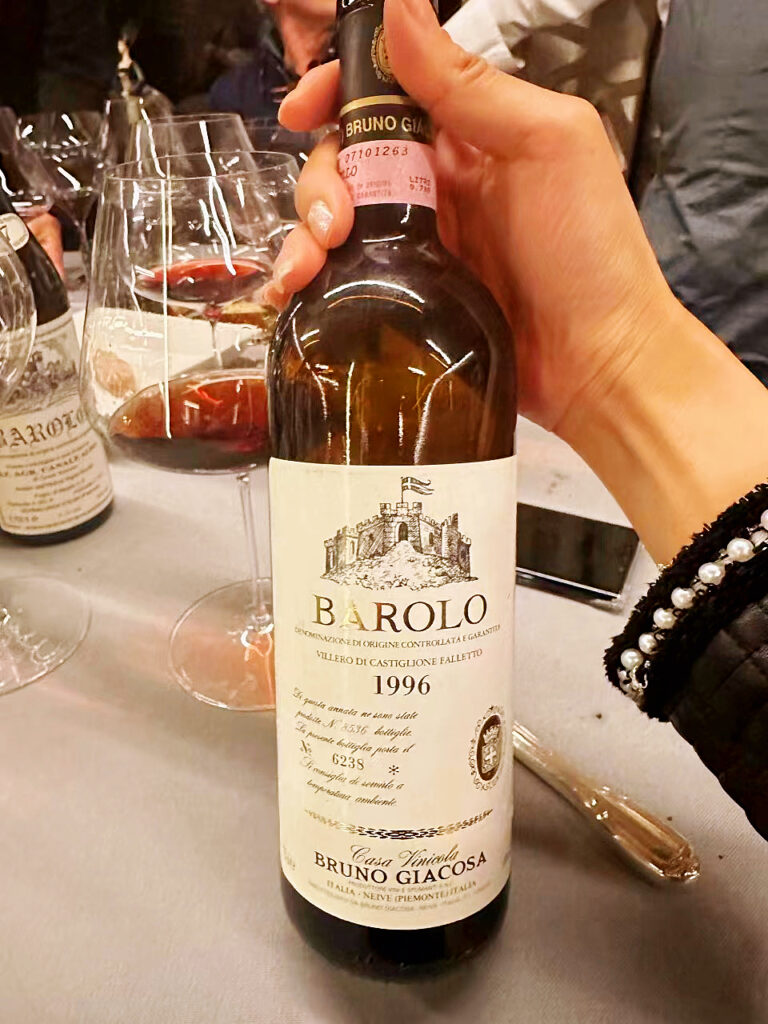
When all was said and done, the evening proved a resounding success thanks to new and old friends finally managing to get together after three years of missing each other because of the Covid plague. Massimo Camia’s outstanding cuisine did the rest, so we called it a night happy. Very happy.

 中文
中文
